Page 150 of 352 pages « First < 148 149 150 151 152 > Last »
Note of how slaves are employed
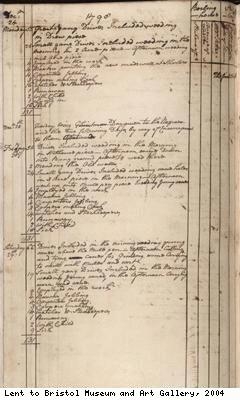
Description:
Pinney Papers; Plantation Occurances, 1798 – 1800.
Note of how slaves are employed; Christmas Day and the next two days given as holiday by way of encouragement to them .
Date: Dec 1798
Copyright: Lent to Bristol Museum and Art Gallery
Note of how slaves are employed
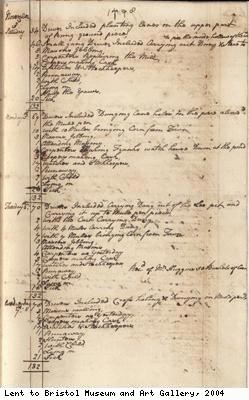
Description:
Pinney Papers; Plantation Occurances, 1798 – 1800.
Note of how slaves are employed; Sunday off, planting, small gang carrying dung to fields, carting corn from town, cask making, etc.
Date: Nov 1798
Copyright: Lent to Bristol Museum and Art Gallery
Sugar account, 1799
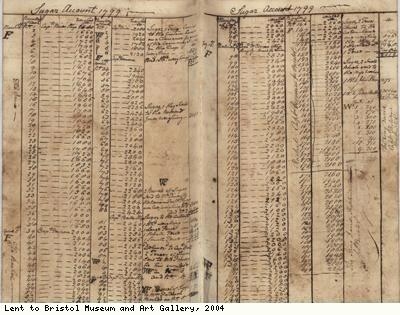
Description:
Pinney Papers; Plantation Occurances, 1798 – 1800.
Sugar account, 1799.
Lists of production and sales; number of casks exported March – July, including 25 shipped on the ship Rachel to Bristol.
Date: 1799
Copyright: Lent to Bristol Museum and Art Gallery
Note of how slaves are employed

Description:
Pinney Papers; Plantation Occurances, 1798 – 1800.
Note of how slaves are employed; Slaves do not work on Sundays, Great and small gangs weeding, carrying thatching materials etc.
Date: June 1798
Copyright: Copyright Bristol University
Insurance cover note for shipping sugar
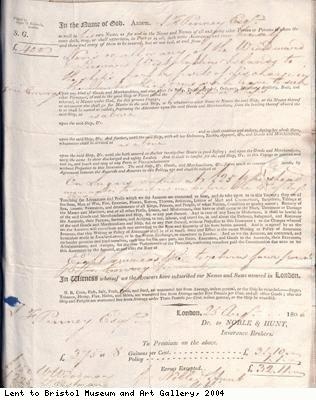
Description:
Insurance cover note for sugar to be shipped in 1807, to J Pinney from Noble and Hunt, London. Miscellaneous Pinney, volume 1.
Date: unknown
Copyright: Lent to Bristol Museum and Art Gallery
Training blood hounds to track runaways
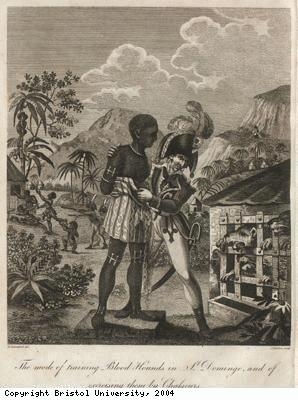
Description:
The Mode of training Blood Hounds in St Domingo and of exercising them by chasseurs (dog handlers). Blood hounds were used to track runaway slaves. From An Historical Account of the Black Empire of Hayti by Marcus Rainsford esq, late captain, Third West India Regiment. Published London, 1805.
Date: 1805
Copyright: Copyright Bristol University
Blood hounds attacking black family
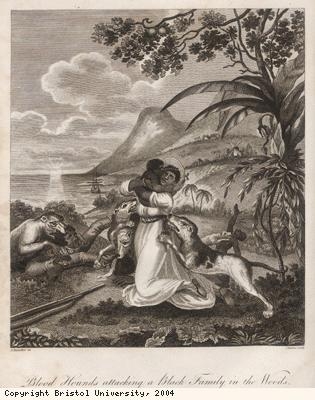
Description:
Blood Hounds attacking a Black Family in the Woods . Hounds were used to track down runaway slaves. From An Historical Account of the Black Empire of Hayti by Marcus Rainsford esq, late captain, Third West India Regiment. Published London, 1805.
Date: 1805
Copyright: Copyright Bristol University
Mode of exterminating Black Army

Description:
Mode of exterminating the Black Army as practised by the French. From An Historical Account of the Black Empire of Hayti by Marcus Rainsford esq, late captain, Third West India Regiment. Published London, 1805.
The picture shows a French interpretation of the rebellious uprising of Haiti’s slaves in 1789,against the French who owned the island.In 1798 the Caribbean island of Haiti finally achieved independence.
Date: 1805
Copyright: Copyright Bristol University
Revenge taken by Black Army
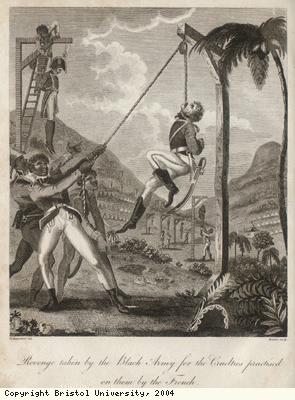
Description:
Revenge taken by the Black Army for the cruelties practised on them by the French . From An Historical Account of the Black Empire of Hayti by Marcus Rainsford esq, late captain, Third West India Regiment. Published London, 1805.
The Black Army were slave rebels.
Date: 1805
Copyright: Copyright Bristol University
Leader of St Domingo slave rebellion
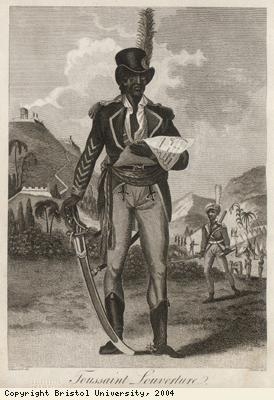
Description:
Troussaint Louveture, leader of the slave rebellion on St Domingo, Haiti. From An Historical Account of the Black Empire of Hayti by Marcus Rainsford esq, late captain, Third West India Regiment. Published London, 1805.
Date: 1805
Copyright: Copyright Bristol University
Page 150 of 352 pages « First < 148 149 150 151 152 > Last »

